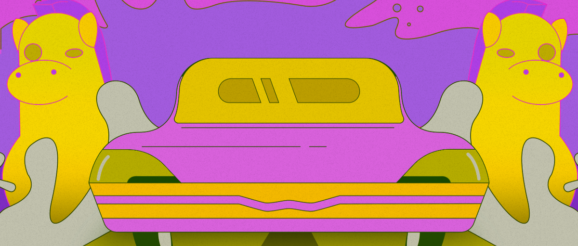Stuck in the middle with you — when neglecting processes kills technology and innovation

Stuck in the middle with you — when neglecting processes kills technology and innovation
I know, it’s an old song and I’m pretty sure Stealers Wheel was not talking about technology, but I couldn’t resist the analogy, because that’s exactly how we feel when we have so much expectation that a specific kind of innovation will save us from sinking into our old processes, and, well, it starts to sink with us.
“Yes I’m stuck in the middle with you, and I’m wondering what it is I should do, it’s so hard to keep this smile from my face, losing control, yeah, I’m all over the place” — Stuck In The Middle With You, Stealers Wheel.
One of the most common mistakes I see designers commit — I don’t want to sound judgmental, I admit I’ve committed myself too — is to neglect to design and validate experience and process maps. I know, we are always pushed by tight schedules and the necessity of delivering something fast, which is something that will never change, maybe for good. The non-designers stakeholders in our projects normally expect that we will give form to the solution concept — which is what we deliver when we build a prototype. But we need to resist the temptation of jumping directly to this phase.
It’s important to understand the environment in which we are building our solution:
Sometimes a single button functionality on a screen would depend on a whole chain of events and processes that might invalidate an interaction, maybe even a whole project — or hopefully the other way around.
Maybe a well-designed process phase could save our users the effort to navigate through a set of screens that could have been solved in a much easier way, maybe without a single screen at all.
There is no way to disconnect technological innovation and the design of new solutions and features from renewals in processes, methods and standards — formal translations of our way of thinking and acting.
The effectiveness of a new technology proves itself against the resolution of a latent need — which in itself accentuates the fact that something needs to be done differently — or the simplification and increment of something that is not necessarily a recognized need, but benefits positively from what is generated by the tool. In both cases, there is a change in the previous state, a renewal in the perception of that product, service or industry.
A digital service, for example, can simplify our interaction with institutions that previously were limited to physical structures, such as what happened at several banks. Opening a new account, a registration change and even a new credit limit request can be done in less than five minutes through any smartphone. Needless to say, these new formats required great effort and planning from these banks, but the effectiveness of the new experiences in our society proves the need to discuss old processes.
However, if there is no change in the way interactions occur and the mentality around certain concepts, the use of new technologies, even those considered revolutionary, may be unfeasible.
It would not make sense to design an application with the features of registration change and credit request if behind the curtains there was no way to consolidate, analyze and consume this information, even though the idea making perfect sense from the customer’s perspective. It would not be feasible to provide these services without the credit analysis processes being redesigned, without the people who have always been part of these interactions in the past not being included during the analysis and construction of the solution concept.
One way to illustrate this perspective is the example of what happened in the United Kingdom in the 19th century, with the arrival of the first steam vehicles in the city. Many consider the automobile to be the great invention of that century because its advent has changed the way we move, transport and, mainly, perceive space. The impact of the automobile changed the way we organize our cities and opened up unimaginable possibilities for those whose perspective was limited to horse riding. However, driving a car was a painful activity in the early 19ths.
In 1865, the English parliament approved one of the so-called “Locomotive Acts”, a series of legal restrictions for drivers, above all to keep the streets safe for horses, carts, and pedestrians — and making it virtually impossible to use cars. Some examples of these laws are limiting the speed limit to 2 miles per hour within cities; another was the need to have a person walking in front of the vehicle, waving a red flag indicating the presence of the car, during the entire journey — later these laws would become known as the “Red Flag Act”.
